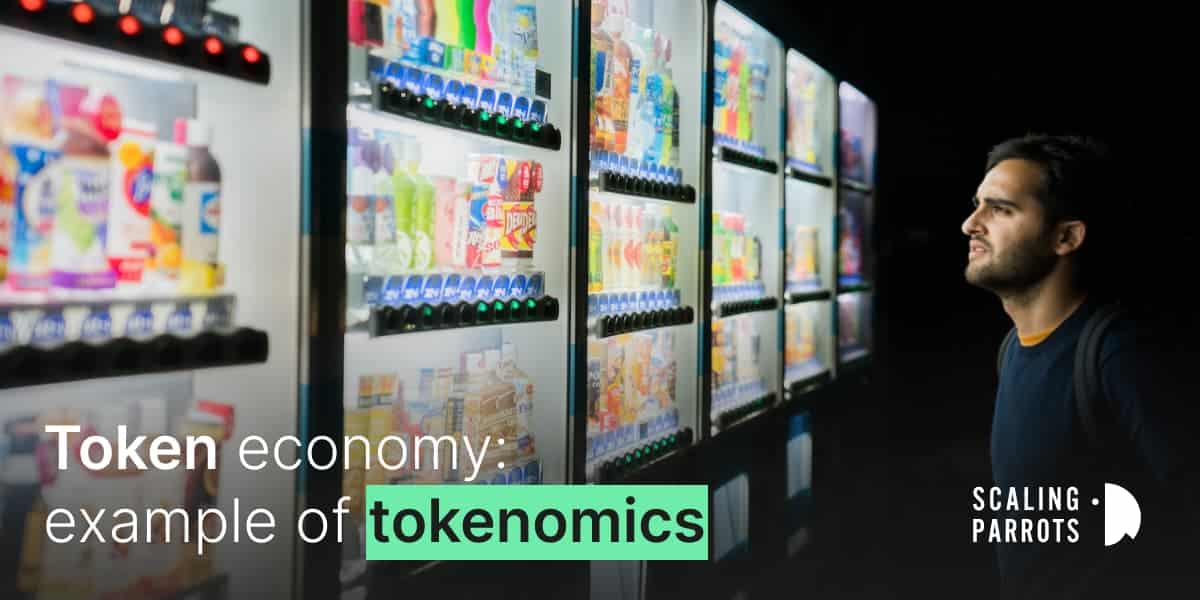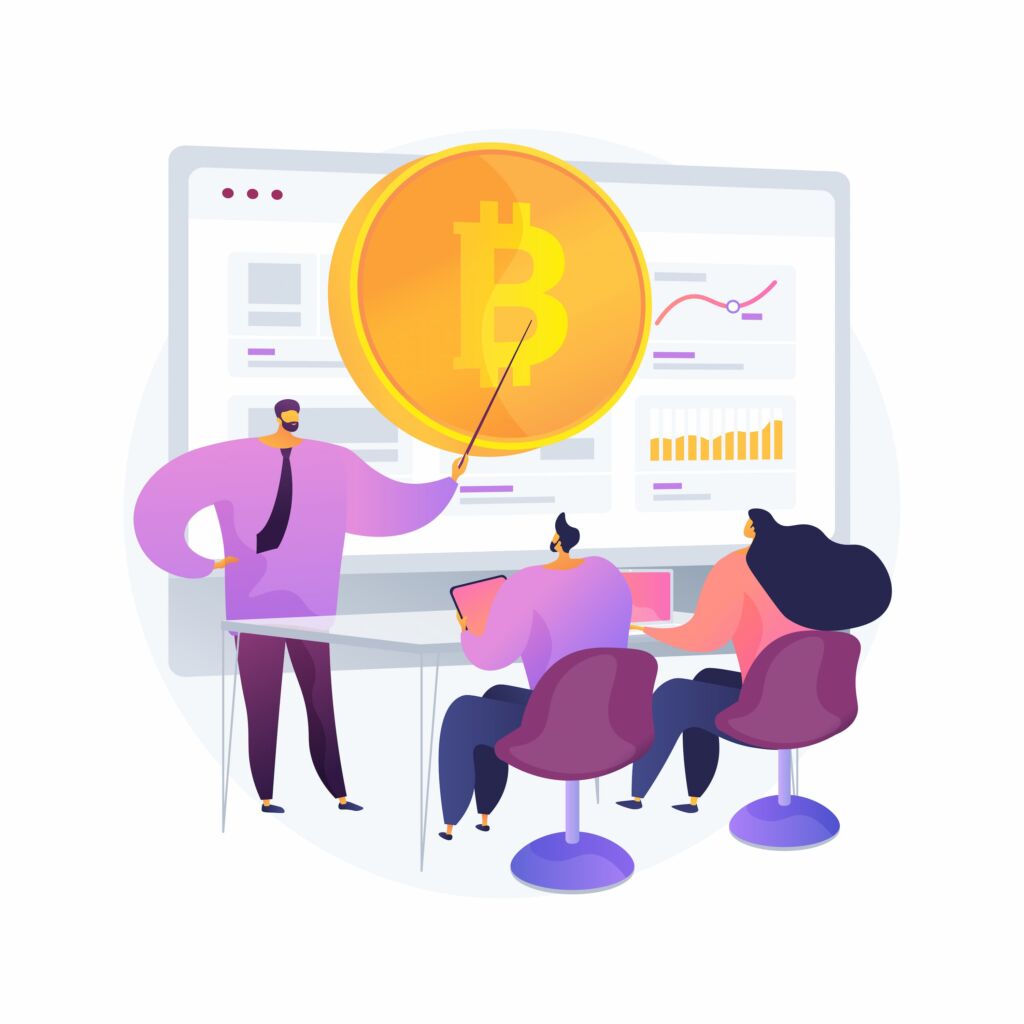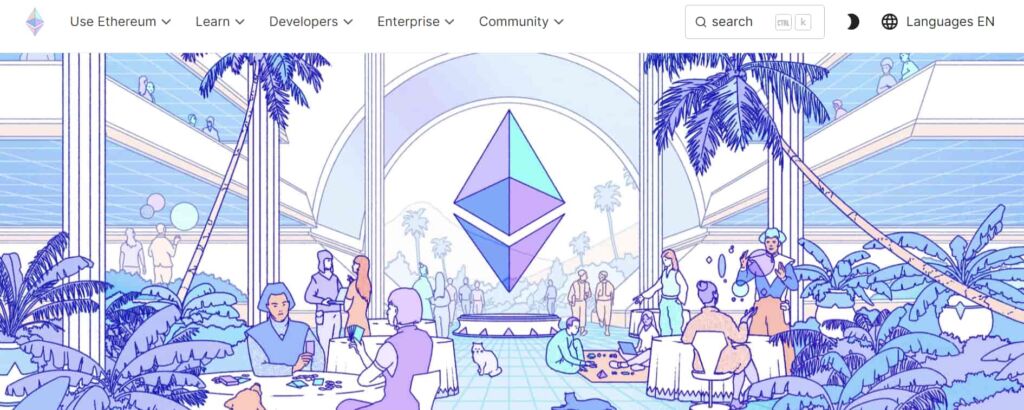
Money is used for everything, international transactions, tax payments, purchasing needs, etc. It is the asset that dominates all sectors of society and is controlled in turn by one of these sectors. Until recently, governments controlled these assets, but banking institutions eventually took them over.
The crypto sector arose to provide the people with this power. It is loaded with digital assets, the most essential of which is the token. It has influenced the global economy and monetary policy. Individuals can now create their own microeconomies.
The reality is masked within the concept of tokenomics. You’ve probably heard of this concept, or it will sound familiar to you, but don’t worry because this article will tell you all you need to know about tokenomics or token economy and its examples.
This token economy concept is nothing new, but it is still revolutionary and has taken a new boom, feeding on old and new ideas. Amid the Blockchain revolution and a technology capable of tokenizing virtually everything globally, the token economy re-emerges. This fact opens up previously unexplored avenues for economic development.
But what exactly is token economics, how does it work, and what are the benefits? Please read on to find out.
What is the token economy
Tokenomics, also known as tokenomics, is a combination of the words token and economy. This refers to the token economy. And according to the BBVA bank, a token is a cryptographic unit of value issued by a private Blockchain network. To put it simply, tokens are cryptocurrencies. An example is Bitcoin or Ethereum.
Tokenomics, as defined by these two principles, is how people handle digital assets or tokens within a Blockchain system. However, this concept extends beyond all of this.
The token economy has brought what banks use as monetary policy to Blockchain networks. Its primary goal is to establish a token-based economic ecosystem. All of the interactions that occur with these tokens sustain this ecosystem.
These tokens represent real assets like a work of art, a book, a concert ticket, a song, real estate, a car, and even shares in a financial framework are all examples of real assets. All of these assets are important because they have real value. We can transfer anything valuable from the physical world to the digital world.
One of the most noteworthy differences is that any asset moved to this digital ecosystem can be decentralized. This means that outside forces no longer govern the asset, and the token’s owner is the only person with authority over it.
The word token means a tangible representation of a fact, quality, feeling, etc. It is simply an asset or utility that a company has and is usually given away to its investors during a public sale.
The quality of a token will persuade users and investors to adopt it and support the development of an ecosystem around it. The token economy represents the underlying project of that token. The token economy simply deals with how token creation is controlled to ensure smooth project operation.
This creation management already exists for “fiat” monetary systems and allows inflation monitoring. Tokenomics ultimately refers to the monitoring of this phenomenon applied to cryptocurrencies.
But where does this token economy concept originates from? You will appreciate these concepts when you discover the history that will enable you to understand them more.

History of understanding token economy
The word “Token economy” may seem complex at first sight, but the idea is straightforward. The media universe generally speaks of inflation to highlight an increase in the prices of everyday consumer products. But, in truth, it is not prices that tend to rise; the value of money tends to fall.
Inflation is a phenomenon that has marked many reigns. The example of Philip II, King of Spain, in the 16th century provides a good understanding of the problem.
In the 16th century, Spain conquered Latin America and discovered immeasurable wealth: gold and silver mines lay deep in the Andes Cordillera. Silver ore thus appears to be particularly abundant.
The Kingdom of Spain is hitting the jackpot, yet its financial situation has yet to improve. Indeed, silver ore is mainly used as a haven in Latin countries because coins are mostly made of silver.
The problem stems from the Crown of Spain being over-indebted with many European creditors, particularly Charles-Quint, prince of the Habsburg house. The numerous silver ingots only make a quick passage through Spain and mainly swell the coffers of its French and Dutch neighbors.
As a result, the European market flooded with silver, so the immense Spanish wealth was diminished as the ore abounded on the European shelves.
Ultimately, the excessive amount of silver imported and distributed in Europe caused a significant devaluation of what Philip II could think of as his El Dorado. Better management of its finances could have enabled it to preserve its reserves of precious minerals and thus develop its fabulous treasure over a longer time.
This story shows the importance of the quantity put into circulation on the valuation of an asset. Like the cryptocurrency market, analyzing an asset’s ecosystem requires careful attention to available quantity, total quantity, and inflation management.
How does token economy work
The token economy, also known as tokenomics, aims to create economic ecosystems based on tokens. The users or investors, as well as the project managers, will ensure the stability of this ecosystem.
Just as mentioned earlier, tokens can represent anything. Tokenomics is now expanding beyond digital assets to include physical aspects as well. Furthermore, the token economy might enable us to decentralize their control.
Another point to emphasize is that the development of tokenomics depends entirely on the Blockchain. Tokens can exist in this sense, but there are no tokenomics without the Blockchain.
Tokenomics makes it possible to mark in the depths of the Blockchain the rules governing the maximum quantity, the monetary emission, and the distribution of digital assets (if necessary, specific projects can distribute a particular part of the tokens to a distinct entity, the project development team for example).
It is with interest that any investor should dwell on these characteristics since they can significantly influence the token’s valuation. This is generally detailed in the white papers produced by the development teams on the occasion of ICO (initial coin offering).
For any token project to be successful, it needs to have good tokenomics, and these are based on some components, and they are:
The total supply
The total supply represents the maximum amount of tokens the Blockchain can issue. In this case, a distinction must be made between available quantity and total quantity.
The quantity available represents the number of tokens already issued at a time “t,” which you and I can now buy on an exchange like Binance or FTX. The total quantity represents the maximum quantity the number of tokens in circulation will eventually reach.
For example, Bitcoin has 21 million tokens that will be mined on this Blockchain, no more, no less.
Token distribution and vesting periods
Detailed token distributions to stakeholders are now the norm in crypto initiatives. To establish product credibility, it is currently common practice to keep a vesting term on tokens granted to venture capitalists or developers.
The vesting period locks developers’ tokens for a set length of time, protecting investors from perpetrators of pump-and-dump scams.
Staking and mining
At present, initial Blockchains such as Bitcoin and Ethereum provide tokens to reward miners for confirming transactions.
This is known as proof of work (PoW). Miners must utilize their computational power to create new blocks that are then added to the network.
Rewards are given to people who have locked away a particular number of coins in a smart contract on proof-of-stake (PoS) Blockchains that have adopted a staking model for validators. Ethereum is headed toward this architecture with the upgrade to the consensus layer.
Tokens burns
To prevent inflation, crypto platforms must burn tokens to remove them from circulation forever. The price is projected to rise as the quantity of tokens in circulation decreases.
Binance burns its native coin, BNB, quarterly to limit its overall supply. Stellar destroyed 55 billion XLM coins in November 2019, accounting for over half of its total supply, resulting in a short-term price gain of more than 30%.
Factors influencing the governance of token crypto projects
One of the key interests of participating in an ICO (Initial Coin Offering) is the possibility of holding a sufficient quantity of coins at a lower cost to influence the project’s future.
This particular token use is generally found in many challenge projects, such as AAVE on Ethereum or Pancake Swap on the BSC. Holding tokens thus makes it possible to vote for certain decisions impacting the platform (upcoming listing of a new coin, allocation of resources, burn of tokens, etc.).
For example, the holders of the AAVE coin can influence the management of certain platform functionalities: the AAVE coin allows its holders to modulate the rewards allocated to two different uses:
- The use of the platform (loan or borrow) is rewarded by allocating a percentage of the sums left in escrow or borrowed in AAVE. This allows the platform to encourage the arrival of new users
- The stacking rewards are allocated to AAVE coin holders who participate in the platform’s security system (an insurance fund is set up in the event of a security problem)
The AAVE corner also allows you to propose possible improvements, which will lead to its vote by the community in fine.
3 examples of tokenomics
The tokenomics models used by Ethereum, Polkadot, and Helium Token—which don’t have the maximum token supply—are good examples to illustrate how the token economy works.
Polkadot (DOT)
Dot is a token in the Polkadot ecosystem. It offers two primary features, namely;
- Parachains offers comprehensive tooling for Blockchain developers to implement their Blockchain projects.
- Slot Auctions – Developers must submit their project proposals and participate in the auction to be eligible to participate in Parachain. The highest bidder takes the available spot because there is a limited number. Thanks to this auction mechanism, all of the projects on the Polkadot network are held to a high-quality standard.
The entire Polkadot system is built to reward two key professions: users and developers.
To submit their projects to Polkadot Parachains, developers are encouraged to purchase DOT. Following that, the DOTs are locked for 96 weeks on the chain (good use of a freeze mechanic).
Helium token
This token is designed to serve two primary parties’ needs in the Helium Blockchain ecosystem:
- Network administrators and hotspot hosts. Hosts mine HNT while setting up and keeping network coverage.
- Businesses and developers use this network to connect devices and create IoT applications. Data Credits, a $USD-pegged utility token created through the burn of HNT, are used to cover the transaction costs for network wireless data transmissions (in addition to adding Hotspots and sending).
One remarkable feature of this token is that it has an underlying hardware technology behind it. It is an IoT project with a practical application that benefits thousands of people and organizations.
Ethereum (ETH)
Ethereum is another project with simple and well-designed tokenomics worth. It has two types of participants in the network – Network validators and network users.
Network users are the ones that transfer tokens on the network. In contrast, the network validators validate the transactions and earn rewards from transaction fees.
The layer of tools and infrastructure they offer to developers makes Ethereum successful. On top of the Ethereum network, Blockchain developers can write smart contracts, design their tokens, and create decentralized applications. All newly created tokens and Apps will share the advantages of Ethereum’s technology.
The Ethereum token model is relatively straightforward: miners produce new blocks, users carry out transactions, and Miners receive gas fees from transactions. Validators also get rewards from newly created blocks in addition to gas fees.
Despite having an inflationary model and an available supply, Ethereum has so far served the ecosystem well, as shown by the price chart of ETH over the past few years.

What are the benefits of the token economy
One of the main advantages of the Token Economy is that it provides a more detailed analysis of how coins work in their respective networks. For instance, if the initial coin offering’s terms and conditions indicate that some coins will be bought back by the issuer, it can have a stronger effect on the token prices.
For the token economy to be studied, a proper coin model must be created; this implies that tokenomics should only come after devising a relevant concept for a new product, business plan, or service to use the Blockchain.
What are the disadvantages of the token economy
One major setback of the token economy is that it brings about the assumption of the market. In other words, the results derived from the token economy study can be incorrect because of insufficient information about a coin’s network or target market.
Again, profit might be lower than expected if the cryptocurrency market needs to be bigger or a coin does not have strong liquidity.
Conclusion
A token economy is an integral part of the Cryptocurrency space and its underlying dynamics. This economy may appear to be very far in the future, but it is already a reality in our daily lives.
Many people have abandoned traditional banking systems in favor of going digital, resulting in massive investments. Although it is a current reality, it is still in full growth and is seen as the future of the global economy.
See you soon,
Scaling Parrots
